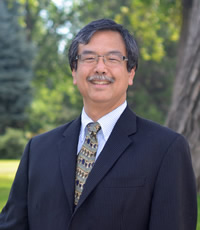“Courage is not simply one of the virtues, but the form of every virtue at the testing point.” — C.S. Lewis
What do many financial advisors focus on when their clients express concern about preserving and growing their wealth? It’s natural for investment experts to focus their attention on the tangible financial assets they are asked to manage and to suggest particular portfolio allocations or tax-efficient strategies to help those clients achieve their stated goals.
But, what if every advisor courageously carried out
their duties as a fiduciary?
What if they asked their clients the uncomfortable question about the story beneath the story of “preserving wealth?”
There is a saying among Asian families: “from rice paddy to rice paddy in three generations.” In the States, it’s “from shirtsleeves to shirtsleeves in three generations.” For 90% of all wealthy families worth from a few million to billions of dollars, this is true. The generation that worked hard to build a business or acquire wealth through sacrificial work sees it all dissipated by their grandchildren’s generation. However, if we look at that 10% of wealthy families who sustain their wealth to the third, fourth and fifth generations, what might we learn?
We’d learn they discovered the real story undergirding “wealth preservation.” It’s a story about successful intergenerational wealth transfer and an opportunity to discover a multi-dimensional definition of wealth.
According to Courtney Pullen and others who advise these families, we would find that these families, in addition to the technical aspects of investing, also focus on intangible but transcendent motivators. Consider what some of them say:
We set up a family foundation because we want to make a difference in the world.
The real satisfaction of having a successful business isn’t the money, it’s the job well done.
These words express deeply held values. Every flourishing family has integrity at the base of its raison d’être. Upon that foundation of integrity, they create a solid brand or vision for their family. They have a way of expressing and passing along and—in the most positive sense of this word–institutionalizing their values. [source: Intentional Wealth, Courtney Pullen].
Wealth preservation goes far beyond the accumulation of money or assets. It’s about preserving and passing along the values, gifts, and passion of the family members through the generations. It’s about passing along the grit and determination that created material wealth as a by-product. To give a personal example, Mom told me stories of how my grandmother would sacrifice to give my Depression era mom and aunt not only food and shelter, not only education and hope for a better life, but even piano and violin lessons!
The purpose of these families wasn’t only to accumulate material wealth, but to create a better life for their kids. They each have particular visions for what a “better life” is; this grows into a family “brand” or vision to build upon. That vision becomes bigger than any one individual of any one generation. That vision results in having grandkids who not only know the story about how family wealth was created but ask how they can serve other family members or the employees of the business that created that wealth. In its best incarnation, these values are expressed as gratitude and generosity. These “kids” echo the values espoused in late President John F. Kennedy’s words: “Ask not what your country can do for you, but what you can do for your country.”
So, does having a family vision or brand conscript each family member into the family business or profession? Absolutely not! A healthy family vision is solid and, yet, flexible enough to encourage subsequent generations to find their own way to live out that vision. It honors the grit and individuality of the family matriarch and patriarch by giving future generations room to create their own lives to “preserve wealth.”
Toolkit:
It’s often said that we cannot lead others where we have not been. Try this exercise: you’ll be pleasantly surprised at how life-giving this exercise can be for you, your family, your stakeholders, and your clients.
- Begin with your immediate family: if you were to have a family vision, what would it be? Often, family stories, sayings or values that have been passed down through the generations are a great starting point for creating a vision.
- What do you want your family to be known for? How might you help your clients or stakeholders create a similar vision for themselves?



